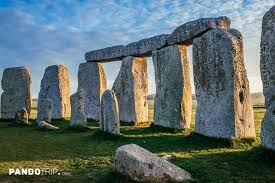The Timeless Beauty of Historical Landmarks
Historical landmarks serve as tangible reminders of our past, preserving the stories and memories of bygone eras for future generations to cherish and learn from. These iconic structures stand as testaments to human creativity, perseverance, and ingenuity, offering a glimpse into the rich tapestry of history that has shaped our world.
Preserving Heritage
Historical landmarks play a vital role in preserving our cultural heritage. From ancient ruins to grand palaces, each landmark tells a unique story that reflects the values, beliefs, and achievements of the people who built them. By safeguarding these sites, we ensure that their legacy endures for centuries to come.
Architectural Marvels
Many historical landmarks are celebrated for their architectural beauty and significance. Whether it’s the intricate carvings of a medieval cathedral or the sleek lines of a modernist skyscraper, these structures showcase the evolution of architectural styles and techniques throughout history.
Symbolism and Significance
Historical landmarks often hold deep symbolic meaning for communities and nations. They can represent freedom, unity, resilience, or cultural identity. For example, landmarks like the Statue of Liberty in New York City or the Great Wall of China are powerful symbols that resonate with people around the world.
Educational Opportunities
Visiting historical landmarks provides valuable educational opportunities for individuals of all ages. By exploring these sites firsthand, visitors can gain insights into different time periods, civilizations, and events. This hands-on learning experience fosters a deeper appreciation for history and encourages curiosity about the world around us.
Promoting Tourism
Historical landmarks are often major tourist attractions that draw visitors from near and far. These sites not only contribute to local economies but also promote cultural exchange and understanding between people of diverse backgrounds. By welcoming travelers to explore their heritage, communities can forge connections that transcend borders.
Preservation Efforts
It is essential to support efforts to preserve and protect historical landmarks for future generations. Conservation projects, maintenance initiatives, and responsible tourism practices help ensure that these precious sites remain intact for years to come. By investing in their upkeep, we safeguard our shared history and heritage.
In conclusion, historical landmarks are more than just physical structures—they are living links to our past that inspire awe, spark curiosity, and foster appreciation for the wonders of human achievement. As we continue to cherish and protect these treasures, we uphold our commitment to honoring the legacy of those who came before us.
Exploring Historical Landmarks: Key Facts and Visitor Information
- What is the history behind this historical landmark?
- When was this historical landmark built?
- Who were the architects or builders of this historical landmark?
- Is there an admission fee to visit this historical landmark?
- Are there guided tours available for this historical landmark?
What is the history behind this historical landmark?
The history behind a historical landmark often reveals a captivating narrative of triumphs, challenges, and cultural significance. Delving into the backstory of a landmark can unveil tales of visionary architects, skilled craftsmen, and the communities that brought the structure to life. Understanding the historical context in which the landmark was built provides valuable insights into the societal norms, technological advancements, and artistic influences of the time. Exploring the history behind a historical landmark not only enriches our appreciation for its architectural beauty but also connects us to the people and events that shaped its enduring legacy.
When was this historical landmark built?
The question “When was this historical landmark built?” is a common inquiry that reflects a curiosity about the origins and history of a particular site. Understanding the construction date of a historical landmark provides valuable context for appreciating its significance and evolution over time. By knowing when a landmark was built, visitors can better grasp the historical, cultural, and architectural influences that shaped its creation, offering a deeper connection to the past and a greater appreciation for the enduring legacy of these iconic structures.
Who were the architects or builders of this historical landmark?
The architects and builders of historical landmarks play a crucial role in shaping the identity and legacy of these iconic structures. Their vision, creativity, and expertise are evident in every detail of the landmark, reflecting the architectural trends and construction techniques of their time. From renowned architects like Frank Lloyd Wright and Antoni Gaudí to skilled craftsmen and laborers whose names may be lost to history, each individual involved in the design and construction process leaves a lasting imprint on the landmark’s significance. Understanding the architects and builders behind a historical landmark adds depth to our appreciation of its beauty, craftsmanship, and historical context.
Is there an admission fee to visit this historical landmark?
When planning a visit to a historical landmark, one common question that arises is whether there is an admission fee to enter the site. The answer to this question varies depending on the specific landmark and its management policies. Some historical landmarks offer free entry to the public as part of their commitment to cultural accessibility and education. However, certain sites may require visitors to pay an admission fee to help support maintenance, preservation efforts, and visitor services. It is always advisable to check the official website or contact the landmark directly for up-to-date information on admission fees and any discounts or special offers that may be available.
Are there guided tours available for this historical landmark?
Many historical landmarks offer guided tours to enhance visitors’ experience and provide in-depth insights into the site’s significance and history. Guided tours are led by knowledgeable experts who can offer valuable information, interesting anecdotes, and context that may not be readily apparent to independent explorers. By joining a guided tour at a historical landmark, visitors have the opportunity to gain a deeper understanding of the site’s cultural, architectural, and historical importance while enjoying a curated and informative visit.





